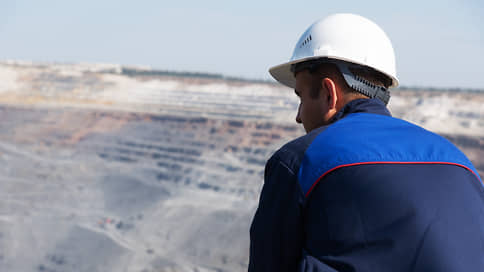Rostec will receive a large lithium deposit in Tuva
[ad_1]

Rostec may obtain a license for one of Russia’s largest lithium deposits, the Tastygskoye polymetallic deposit in Tuva. The government has published the terms of the auction for the asset, which only Rostec complies with. At the same time, the state corporation has already created a structure in Tuva for participation in lithium investment projects. In the last two years, the state has been actively stimulating the development of lithium mining in Russia, where, despite a significant resource base, lithium has not yet been industrially mined. Demand for this metal is expected to grow exponentially on the back of rising demand for batteries and the development of electric vehicles.
The Elbrus Mining Combine (part of the Rostec perimeter) created the Elbrussmetal Lithium company. The company is registered in Tuva, and the main activity is the extraction and enrichment of iron ore.
The press service of Rostec confirmed the establishment of the company. “In the future, the possibility of its participation in lithium investment projects is being considered,” they said.
596 thousand tons
make up the reserves of lithium oxide at the Tastyg deposit
The state corporation did not disclose the projects in which it is planned to participate. However, the Tastyg polymetallic deposit, located 400 km southwest of Kyzyl, is now being prepared for auction in Tuva. In June, Deputy Prime Minister Victoria Abramchenko said that the field was being prepared for licensing on behalf of the President of the Russian Federation. The balance reserves of lithium oxide at the deposit are 596 thousand tons. The government of Tuva estimated investment in development at 17 billion rubles, Interfax reported in March, citing a presentation by the local government.
According to the Tuva Institute for the Integrated Development of Natural Resources of the Siberian Branch of the Russian Academy of Sciences, the deposit was explored in 1955–1960. The average content of lithium oxide is 1.46%, and associated components are beryllium, niobium, tantalum and tin.
On the evening of August 23, the government of the Russian Federation published an order to hold an auction for the Tastygskoye field in 2023. According to the decree, only companies that have licenses for the Tyrnauzskoye tungsten-molybdenum ore deposit in Kabardino-Balkaria can take part. Rostec has such a license.
This year, the state corporation also received a license in Kabardino-Balkaria for the Yu. Mikhailov, whose reserves are 87.7 tons of gold and 390 tons of silver.
The Russian authorities have stepped up efforts to produce lithium, which is a key metal for the production of modern batteries. Russia has one of the largest reserves of lithium in the world (according to the Ministry of Natural Resources, 3.5 million tons of lithium oxide in the ores of 14 deposits), but so far there is no commercial production in the country. One of the reasons is the relatively high cost, and according to this indicator, Russian assets are believed to be inferior to the deposits of Chile, Argentina and Bolivia, where the main world production of lithium from brines is concentrated.
In February, an auction was held for Russia’s largest lithium deposit, Kolmozero, in the Murmansk region: the license was acquired by a joint venture between Norilsk Nickel and Rosatom. Rosatom plans to use this lithium, among other things, for the production of its own batteries at an enterprise in Kaliningrad. The Ministry of Natural Resources plans to license seven deposits with lithium ores in 2023-2024, which are located in the Murmansk and Irkutsk regions, Tuva, Buryatia and Transbaikalia
According to Vygon Consulting, global demand for lithium will reach 3.4-6.1 million tons of LCE (lithium carbonate equivalent) by 2040, primarily due to the growth in the production of batteries for electric vehicles. At the same time, the volume of potential supply of lithium by this date is estimated at 3.9 million tons of LCE. Due to outpacing demand, analysts predict that the price of lithium in the period from 2025 to 2040 will be about $35 thousand per ton of LCE, which is significantly higher than the cost of its production.
[ad_2]
Source link





